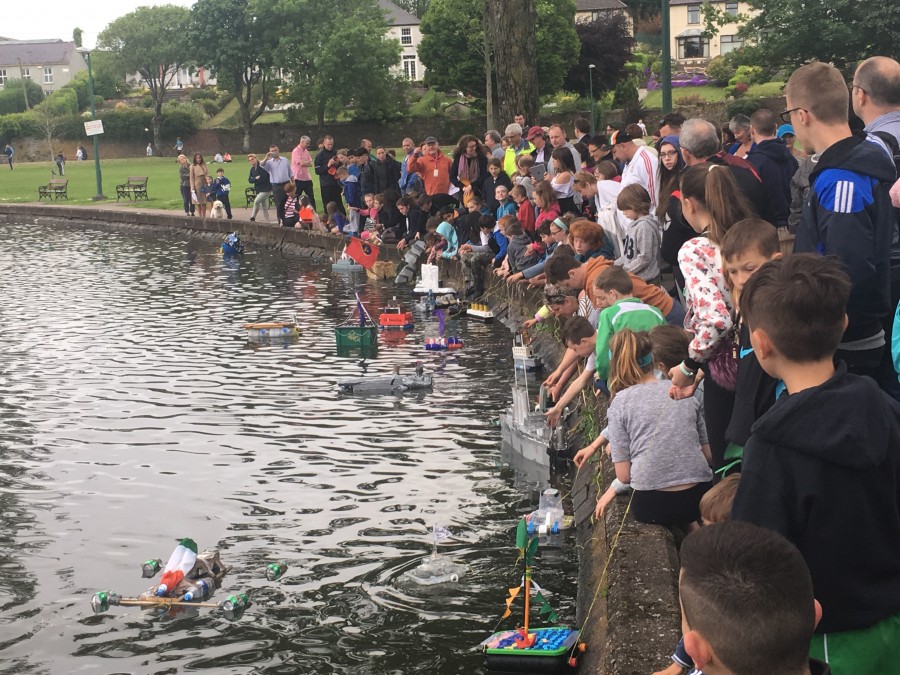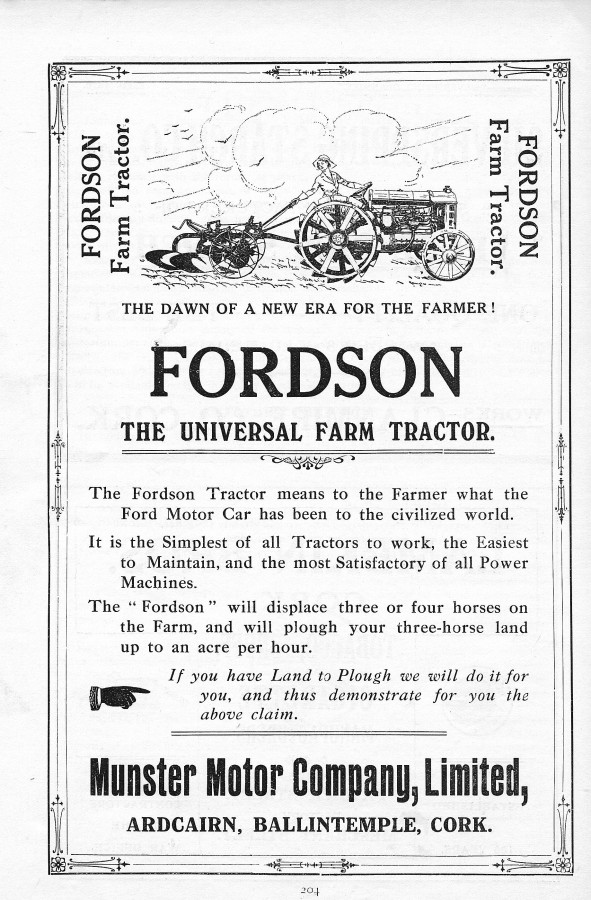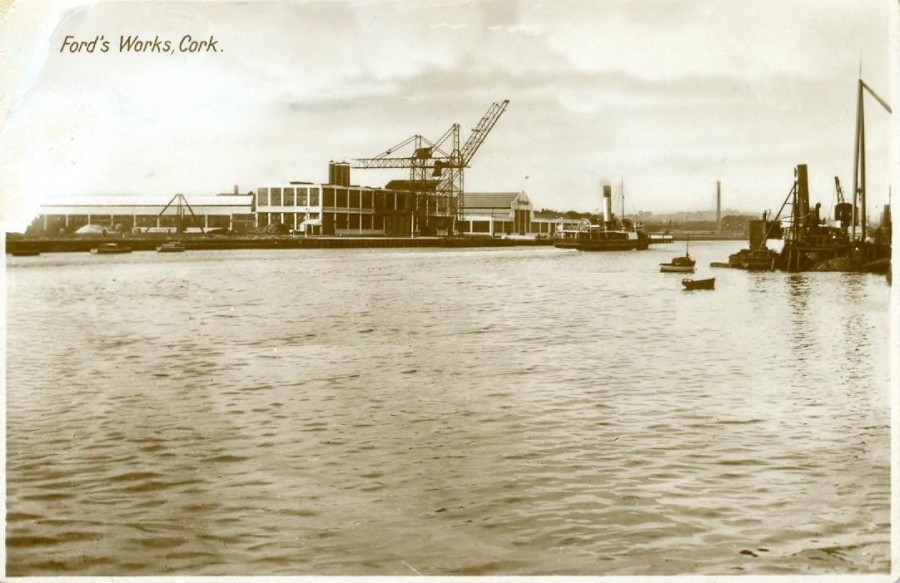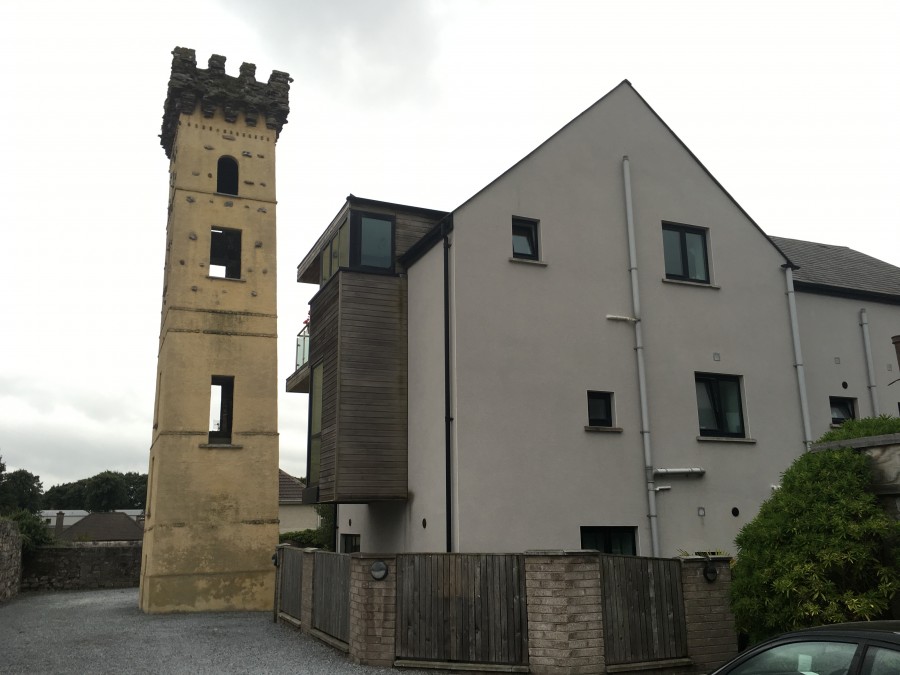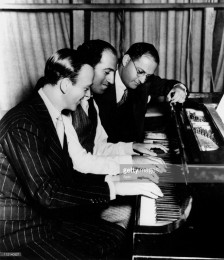Category Archives: Arts
Kieran’s Our City, Our Town, 22 September 2016
Kieran’s Our City, Our Town Article,
Cork Independent, 22 September 2016
Discover Cork: Schools’ Heritage Project 2016-17
This year coincides with the fourteenth year of the Discover Cork: Schools’ Heritage Project. Again launched for the new school term, the Project is open to schools in Cork; at primary level to the pupils of fourth, fifth and sixth class and at post-primary from first to sixth years. There are two sub categories within the post primary section, Junior Certificate and Leaving Certificate. A student may enter as an individual or as part of a group or a part of a class entry.
Co-ordinated by myself, one of the key aims of the project is to encourage students to explore, investigate and debate their local heritage (built, archaeological, cultural and natural) in a constructive, active and fun way. Projects on any aspect of Cork’s rich heritage can be submitted to an adjudication panel. Prizes are awarded for best projects and certificates are given to each participant. A cross-section of projects submitted from the last school season can be gleamed from this link on my website, www.corkheritage.ie where there are other resources, former titles and winners and entry information as well.
Students produce a project on their local area using primary and secondary sources. Projects must also meet five elements. Projects must be colourful, creative, have personal opinion, imagination and gain publicity before submission. These elements form the basis of a student friendly narrative analysis approach where the student explores their project topic in an interactive and task oriented way. In particular students are encouraged to attain material through visiting local libraries, engaging with fieldwork, interviews with local people, making models, photographing, cartoon creating, making DVDs of their area. Re-enacting can also be a feature of several projects. For over thirteen years, the project has evolved in how students actually pursue local history. The project attempts to provide the student with a hands-on and interactive activity that is all about learning not only about heritage in your local area (in all its forms) but also about the process of learning by participating students.
This school term there is a focus on the Ford Motor Company with projects on the old factory being encouraged. One hundred years ago, engineering was important in Cork Harbour quay wall works, Cork’s electric lighting and power supply, and Railway facilities. There was a considerable amount of citizens who worked in foundries, mill-wrighting, jobbing and in general repair work. The possibilities for engineering on a scale appropriate to the extensive waterfront and river transport were to be increased by the arrival to Cork in 1917 of the firm, Messrs. Henry Ford & Son, Inc. of Dearborn, Michigan.
Henry Ford’s grandfather John in his early years was a native of Wolfe Tone Street in Cork City. In later life, he moved with his family to become tenants on an estate at Ballinascarty, near Bandon. John had three brothers, Samuel, Henry and George who emigrated to America in search of fortune in the 1830s. The Ford Motor Company was incorporated in June 1903 with Henry Ford (III) as vice-president and chief engineer. Henry realized his dream of producing an automobile that was reasonably priced, reliable, and efficient with the introduction of the Model T in 1908. From 1908 until 1927, the company would sell more than 15 million Model T cars and trucks in the US and Europe. The company began construction of the world’s largest industrial complex along the banks of the Rouge River in Dearborn, Michigan, during the late 1910s and early 1920s.
In November 1916, Fords made an offer to purchase the freehold of the Cork Park race grounds and considerable land adjoining the river near the Marina. Fords, Cork Corporation and the Harbour Commissioners entered into formal negotiations. The Ford Company acquired approximately 130 acres of land, having a river frontage of approximately 1,700 feet, the company agreeing to erect the buildings to cost at least £200,000 to give employment to at least 2,000 adult males, and to pay a minimum wage of one shilling per hour to them when employed in the factory after completion. The plant being laid down by the company was specially designed for the manufacture of an Agricultural Motor Tractor, well known as the “fordson”, a 22 horse power, four cylinder tractor, working with kerosene or paraffin, adaptable either for ploughing or as a portable engine arranged for driving machinery by belt drive. There is a great project for a student to pursue on some of the stories of Fords.
The Discover Cork: Schools’ Heritage Project is about thinking about, understanding, appreciating and making relevant in today’s society the role of our heritage such as Fords. The project is open to many directions of delivery. Students are encouraged to engage with their topic -in order to make sense of it, understand and work with it. Students continue to experiment with the overall design and plan of their work. This project in the City is kindly funded by Cork City Council (viz the help of Niamh Twomey), the Heritage Council and Cork Civic Trust (viz the help of John X. Miller). Prizes are also provided by the Lifetime Lab, Lee Road and Sean Kelly of Lucky Meadows Equestrian Centre, Watergrasshill (www.seankellyhorse.com). There is also a County Cork edition.
Captions:
862a. Advertisement for Fordson, 1919 (source: Cork City Library).
862b. Ford Works, c.1930 (source: Cork City Museum)
Kieran’s Our City, Our Town Article, 25 August 2016
Kieran’s Our City, Our Town Article,
Cork Independent, 25 August 2016
Walks Through History
National Heritage Week is nearing its end (20th – 28th August). I have two more tours to finish out the week. The first on the Friar’s Walk area is on this Friday 26 August 2016 – meet at Red Abbey tower, Mary Street, 7pm (free, duration: two hours). The second is on this Saturday 27 August and explores the local history of The Mardyke, Fitzgerald’s Park & the Cork International Exhibition – meet at band stand, 2pm (free, duration: two hours)
The first of the walks is a new walking tour for me which begins on Red Abbey square to explore the area’s medieval origins. This small corner of the city alone can boast a medieval friary tower, the eighteenth century South Chapel, Nano Nagle’s burial ground, St Nicolas Church and all that in a 50 metre radius. Climbing up to Barrack Street, to the seventeenth century Elizabeth Fort and its adjacent barracks Cat Barracks brings the real story of the importance of protecting the old walled town and harbour of Cork. However there are many interesting sites in this area, which should really make the list of the must see historic monuments in Cork. Tracking through the adjacent Evergreen Buildings and Industry Place to St Stephen’s Place brings the walker to the former site of St Stephen’s Church, a leper colony established on the southside in medieval times, mirroring a similar colony in what is now the Mayfield area. By the early eighteenth century the old church had been replaced by a hospital and Blue Coat School for the Protestant merchant classes. The arched entrance is now bricked up, beyond which are the contemporary back gardens of housing. Nearby an old eighteenth century Anabaptist graveyard lurks under a locked and overgrown basketball court.
The legacy of the Cork Improved Dwellings Company is ever present. Established in 1860 through a shareholding idiom, one could speculate and invest, and get a return whilst at the same time providing an escape for many impoverished families from slum ridden areas of the city. The company eventually built almost 420 houses – Prosperity Square & surrounds, Rathmore Terrace on St Patrick’s Hill and Hibernian Buildings on Albert Road became their flagship projects. This company managed its housing stock till 1961, when the company was liquidated when it sold off its shares to a local investor – through Mr Swanton, a solicitor in town. If anyone has more detail on this I would to hear it.
Another and a very interesting particular venture was opened in 1863, that of a large tower and formal gardens owned by Michael Callanan, a city merchant. The idea for such a project grew out of Callanan inspiration by the Crystal Palace Exhibition in London, which he visited in 1851. A high limestone tower would be the central point of Callanan’s proposal. The estimated cost of the scheme was £50,000. Ornamental gardens were designed and the tall tower was constructed approximately, 25 to 30 metres in height, which assumed the shape of a medieval tall castle. With over one hundred steps to the top and crennellated at the top, the tower provided panoramic views of the city.
Once the initial gardens and tower were in place, Callanan attempted to attract the finances of others by glorifying his project by placing large advertisements in local street directories and newspapers. In 1871, an account in a city of Cork directory outlined Callanan’s several attractions around the tower – seven acres of “pleasure grounds”, a new and spacious concert hall in construction, space for athletic sports, gymnastics, and olympic games, archery and cricket, a racket court and ball alley. An extensive racecourse was proposed to be laid down in lawn grass and to be afforded a level run of nearly half-a-mile.
Callanan stated that it was his attention to occasionally produce pyrotechnic displays and to devise entertainments, which would introduce as he noted “some of the choicest resources of the Polytechnic Art”. Regarding refreshments, the leading feature in this department consisted of ‘XX’ and ‘XXX’ porter from the old and celebrated firm of Beamish and Crawford. Wines, ales, and spirits were deemed of the best quality. Tea and coffee, fruits were supplied during the season.
In the 1871 advertisement, Callanan, sought to remind citizens that the tower was erected by him for the sole benefit of the sick poor of the city. Entrance prices to the Tower Gardens are unknown and all classes of people were welcomed. For the satisfaction of all parties, an arrangement was made by placing a Protestant and a Roman Catholic relief box at the entrance of the tower, accessible only to the officers of the respective communities.
However, by Guy’s street directory of Cork in 1875-6, the tower gardens were vacant and closed. Numerous references to it during court cases listed in the Cork Examiner detail it as a place, which attracted too much undesirable drinking sessions and sexual behaviour. As a result, much of the facilities and buildings were taken down apart from the viewing tower. Today, the tower is still a prominent landmark on the south side of the city and forms a backdrop to the gardens behind Tower Street. The formal gardens are long gone and what remains is the external shell of the tower with over a dozen windows to be seen.
Come on the tours!
Captions:
858a. Callanan’s Tower as presented in Fulton’s Cork Street Directory 1871 (source: Cork City Library)
858b. Callanan’s Tower, present day (picture: Kieran McCarthy)
Ballinlough Summer Festival, 20 August 2016
Always a great family day out, please support
McCarthy’s Make a Model Boat Project, Atlantic Pond, Sunday, 12 June, 2016
Cllr Kieran McCarthy invites all Cork young people to participate in the seventh year of McCarthy’s ‘Make a Model Boat Project’. All interested must make a model boat at home from recycled materials and bring it along for judging to Cork’s Atlantic Pond on Sunday 12 June 2016, 2pm. The event is being run in association with Meitheal Mara and the Cork Harbour Festival. There are three categories, two for primary and one for secondary students. The theme is ‘Cork Harbour Boats’, which is open to interpretation. There are prizes for best models and the event is free to enter. Cllr McCarthy, who is heading up the event, noted “I am encouraging creation, innovation and imagination amongst our young people, which are important traits for all of us to develop”. In addition, Cllr McCarthy emphasises that places like the Atlantic Pond are an important part of Cork’s natural and amenity heritage. For further information and to take part, please sign up at www.corkharbourfestival.com.
The Cork Harbour Festival will bring together the City, County and Harbour agencies and authorities. It connects our city and coastal communities. Combining the Ocean to City Race and Cork Harbour Open Day, there are over 50 different events in the festival for people to enjoy – both on land and on water. The festival begins the June Bank Holiday Saturday, 4th June, with the 28km flagship race Ocean to City – An Rás Mór. Join thousands of other visitors and watch the hundreds of participants race from Crosshaven to Douglas to Cork City in a spectacular flotilla. Cllr McCarthy noted: “During the festival week embark on a journey to discover the beautiful Cork Harbour and enjoy free harbour tours, sailing tasters, open days at Spike Island and Fort Camden, and lots more; we need to link the city and the harbour more through branding and tourism. The geography and history of the second largest natural harbour in the world creates an enormous treasure trove, which we need to harness, celebrate and mind”.
McCarthy’s ‘Make a Model Boat Project’ 2016
Cllr Kieran McCarthy invites all Cork young people to participate in the seventh year of McCarthy’s ‘Make a Model Boat Project’. All interested must make a model boat at home from recycled materials and bring it along for judging to Cork’s Atlantic Pond on Sunday 12 June 2016, 2pm. The event is being run in association with Meitheal Mara and the Cork Harbour Festival. There are three categories, two for primary and one for secondary students. The theme is ‘Cork Harbour Boats’, which is open to interpretation. There are prizes for best models and the event is free to enter. Cllr McCarthy, who is heading up the event, noted “I am encouraging creation, innovation and imagination amongst our young people, which are important traits for all of us to develop”. In addition, Cllr McCarthy emphasises that places like the Atlantic Pond are an important part of Cork’s natural and amenity heritage. For further information and to take part, please sign up at www.corkharbourfestival.com.
The Cork Harbour Festival will bring together the City, County and Harbour agencies and authorities. It connects our city and coastal communities. Combining the Ocean to City Race and Cork Harbour Open Day, there are over 50 different events in the festival for people to enjoy – both on land and on water. The festival begins the June Bank Holiday Saturday, 4th June, with the 28km flagship race Ocean to City – An Rás Mór. Join thousands of other visitors and watch the hundreds of participants race from Crosshaven to Douglas to Cork City in a spectacular flotilla. Cllr McCarthy noted: “During the festival week embark on a journey to discover the beautiful Cork Harbour and enjoy free harbour tours, sailing tasters, open days at Spike Island and Fort Camden, and lots more; we need to link the city and the harbour more through branding and tourism. The geography and history of the second largest natural harbour in the world creates an enormous treasure trove, which we need to harness, celebrate and mind”.
McCarthy’s Community Talent Competition, 2016
Cllr McCarthy’s Community Talent Competition 2016 Cork’s young people are invited to participate in the eighth year of Cllr Kieran’s McCarthy’s ‘Community Talent Competition’. The auditions will take place on Sunday 8 May between 10am-5pm in the Lifetime Lab, Lee Road. There are no entry fees and all talents are valid for consideration. The final will be held two weeks later. There are two categories, one for primary school children and one for secondary school students. Winners will be awarded a perpetual trophy and prize money of €150 (two by €150). The project is being organised and funded by Cllr Kieran McCarthy in association with Red Sandstone Varied Productions (RSVP).
Cllr McCarthy noted: “In its eight year, the talent competition is a community initiative. We generally get to audition people who have very little experience of performing. Within the audition process there is friendly feedback from our judges and if the auditionee gets through there are workshops to offer advice and support. The talent competition is all about encouraging young people to develop their talents and creative skills, to push forward with their lives and to embrace their community positively. I am delighted with the nuggets of talent that we have found in Cork communities over the years and very proud of those who post audition and competition, have taken up music, drama, and other elements of the performing arts within Cork – they engage with their talent and develop and enjoy it more”. Further details can be got from the talent show producer (RSVP), Yvonne Coughlan, 086 8764685 or email rsvpireland@gmail.com.
Percy French Celebration, Saturday 7 May 2016
The birthday of Percy French is being marked in words and song by the Douglas Writers in Cork to co-incide with the publication of a new book on the famous entertainer. The Douglas Writers have now produced a DVD on Percy French and his link to the West Clare railway, made famous by his song Are You Right There Michael? Local author Billy MacCarthy from Shamrock Lawn, a lifelong fan of Percy French and a founder member of the Douglas Writers swops words for notes when he performs the song on the DVD. “The comic songs of Percy French are still enjoyed by many people and I hope the events in Douglas will introduce him to a new generation,” he said.
Cork city councillor and historian Kieran McCarthy will introduce the DVD in Douglas Library in the Douglas Village Shopping Centre on Saturday 7th May beginning at 11.30 am when he talks on the legacy of Percy French. Later at 8.30 pm in the Douglas GAA Hall, Ronnie McGinn hosts a Percy French Evening with showband star Art Supple and Friends. Tickets at five euro are now available from the Douglas Community Centre and the Douglas GAA Hall. All proceeds in aid of Douglas Meals on Wheels.
Kieran’s Our City, Our Town, 21 April 2016
Kieran’s Our City, Our Town Article,
Cork Independent, 21 April 2016
Crazy for You
My second foray with Cork City Musical Society brings Crazy for You the musical from 29 April to 1 May in the Firkin Crane Shandon, four performances (three evening shows and a matinee). The show for all the family is being directed by myself, has a cast of 30 and a 7-piece band, with musical direction by Michael Young and choreography by Aisling Byrne Gaughan.
We are delighted to present our musical to the public. Our cast of 30 have worked very hard on this production to bring a toe-tapping, sing-along and funny musical, which will leave a smile on the faces of the audience. Amateur musical societies are multiple in nature up and down the country. All bring their local communities together under a volunteer and charity umbrella – collaborating and bringing people together to create an outlet for people and to put drama, music and all ultimately form a key cultural vein within towns and villages. It is important that a city such as Cork has a musical society to promote the inherent love for musical theatre.
Crazy for You is a romantic love musical with lyrics by Ira Gershwin, and music by George Gershwin. Billed as “The New Gershwin Musical Comedy”, it is largely based on the song writing team’s 1930 musical, Girl Crazy, but incorporates songs from several other productions as well. George and Ira Gershwin will always be remembered as the songwriting team whose voice was synonymous with the sounds and style of the Jazz Age. By the time of their 1924 Broadway hit, Lady Be Good!, George had worked with lyricist Buddy DeSylva on a series of revues, George White’s Scandals, while Ira reveled in success with composer Vincent Youmans on Two Little Girls in Blue. But from 1924 until George’s death in 1937, the brothers wrote almost exclusively with each other, composing over two dozen scores for Broadway and Hollywood. Though they had many individual song hits, their greatest achievement may have been the elevation of musical comedy to an American art form.
The history of jazz has its roots firmly planted in the American cities of New Orleans, Chicago, and New York City. And the musical tradition within these cities still lives on today. As jazz spread around the world, it drew on different national, regional, and local musical cultures, which gave rise to many distinctive styles. New Orleans jazz began in the early 1910s, combining earlier brass-band marches, French quadrilles, ragtime and blues with collective polyphonic improvisation. In the 1930s, heavily arranged dance-oriented swing big bands, Kansas City jazz, a hard-swinging, bluesy, improvisational style and Gypsy jazz (a style that emphasized musette waltzes) were the prominent styles. Ira Gershwin was a joyous listener to the sounds of the modern world. He had a sharp eye and ear for the minutiae of living. He noted in a diary: “Heard in a day: An elevator’s purr, telephone’s ring, telephone’s buzz, a baby’s moans, a shout of delight, a screech from a ‘flat wheel’, hoarse honks, a hoarse voice, a tinkle, a match scratch on sandpaper, a deep resounding boom of dynamiting in the impending subway, iron hooks on the gutter”.
In studying the history of jazz music on the other side of the Atlantic, it is very interesting to research the anti-jazz movement in Ireland in the 1930s. It is difficult to imagine the halting of such glorious toe-tapping music such as “I Got Rhythm”. In an article in the History Ireland magazine (1993) by Jim Smyth entitled Dancing, Depravity and all that Jazz, The Public Dance Halls Act of 1935 he notes the pressure for constraints on the dance halls was becoming forceful. The Gaelic League re-launched its anti-jazz campaign in 1934 with a statement very much in tune with the sentiments of the bishops: “It is this music and verse that the Gaelic League is determined to crush…its influence is denationalising in that its references are to things foreign to Irishmen: that it is the present day instrument of social degradations all too plain, even in Ireland. That was the reason for their-launching of the anti-jazz campaign, the reason it received the blessing of the church and the approval of the state. The League was quick to condemn politicians who were seen as behavin an ‘anti-national’ fashion”. The Secretary of the League, attacking the broadcasting of jazz on Radio Éireann, had this to say about the minister responsible: “Our Minister of Finance has a soul buried in jazz and is selling the musical soul of the nation for the dividends of sponsored jazz programmes. He is jazzing every night of the week”. A number of County Councils adopted resolutions condemning jazz and all-night dancing. In January 1934 a large demonstration took place in Mohill, County Leitrim. It was made up mostly of young people and the press estimated the attendance at 3,000, with five bands and banners inscribed with “Down with Jazz” and “Out with Paganism”. Support came from church and state.
But one can imagine that deep within some dance halls, the needs to release this soulful and spirit enhancing music. Come and enjoy Cork City’s musical production of Crazy for You, 29 April-1 May, see www.firkincrane.ie for tickets.
Captions:
840a. Some of the cast for the upcoming Cork City Musical Society production of Crazy for You, The New Musical; 29 April-1 May, www.firkincrane.ie for tickets (picture: Kieran McCarthy)
840b. George Gershwin at piano with Ira Gershwin and Fred Astaire (source: Getty Images)
Cllr McCarthy’s Community Talent Competition 2016
Cork’s young people are invited to participate in the eighth year of Cllr Kieran’s McCarthy’s ‘Community Talent Competition’. The auditions will take place on Sunday 8 May between 10am-5pm in the Lifetime Lab, Lee Road. There are no entry fees and all talents are valid for consideration. The final will be held two weeks later. There are two categories, one for primary school children and one for secondary school students. Winners will be awarded a perpetual trophy and prize money of €150 (two by €150). The project is being organised and funded by Cllr Kieran McCarthy in association with Red Sandstone Varied Productions (RSVP).
Cllr McCarthy noted: “In its eight year, the talent competition is a community initiative. We generally get to audition people who have very little experience of performing. Within the audition process there is friendly feedback from our judges and if the auditionee gets through there are workshops to offer advice and support. The talent competition is all about encouraging young people to develop their talents and creative skills, to push forward with their lives and to embrace their community positively. I am delighted with the nuggets of talent that we have found in Cork communities over the years and very proud of those who post audition and competition, have taken up music, drama, and other elements of the performing arts within Cork – they engage with their talent and develop and enjoy it more”. Further details can be got from the talent show producer (RSVP), Yvonne Coughlan, 086 8764685 or email rsvpireland@gmail.com.
